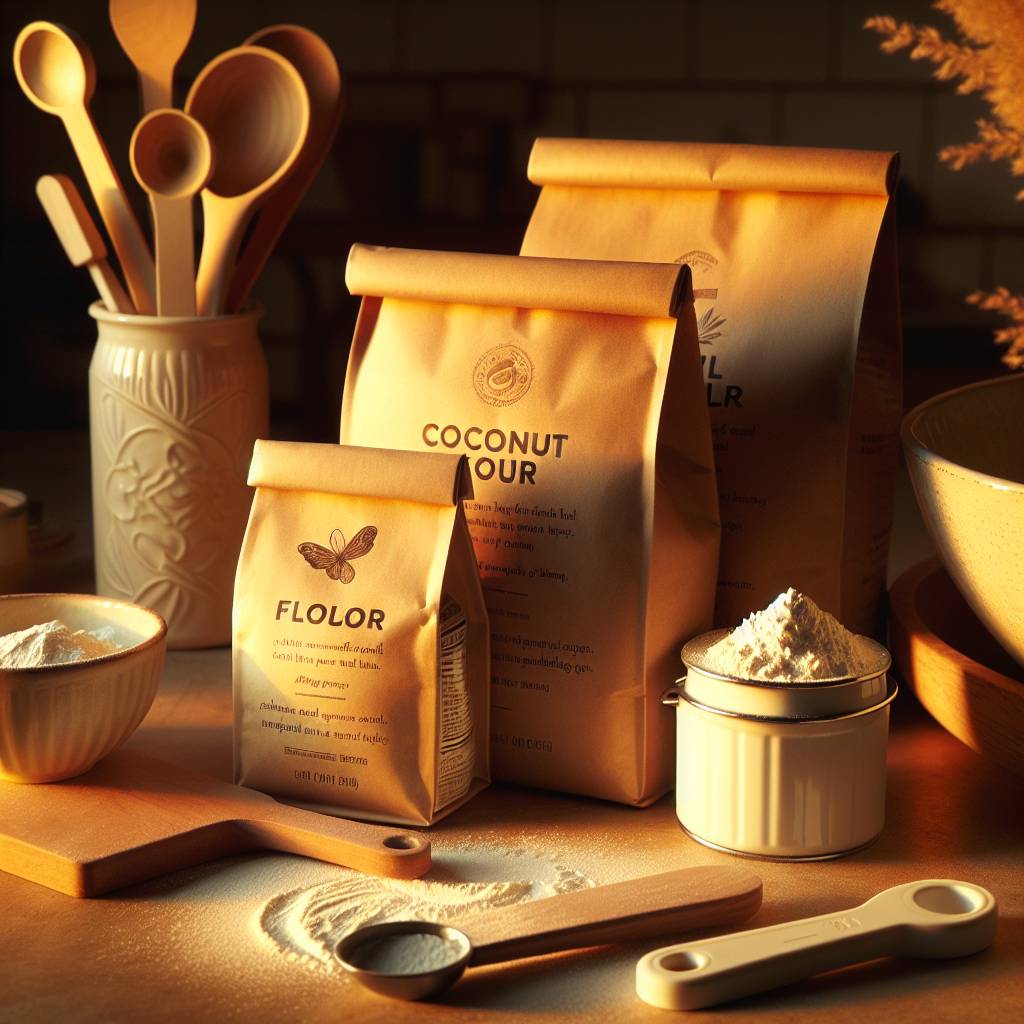What Are Some Alternatives To Wheat Flour For Making Pizza Dough?
You can use alternatives like almond, coconut, or cassava flour as wheat flour substitutes in pizza dough. These options provide unique flavors and textures, so experiment to find your favorite. Remember to adjust the liquid amount as different flours absorb moisture differently.
What non-wheat flour alternatives are suitable for pizza dough, and how do they contribute to the final product’s taste and texture?
When you’re looking to make pizza dough without using wheat flour, there are several great alternatives that can not only match the job but also add unique flavors and textures. Almond flour, chickpea flour, and coconut flour are popular choices. Each of these flours brings its own special touch to the pizza dough. For instance, almond flour adds a nutty flavor and a tender crumb, making the crust slightly moist and rich. Chickpea flour, on the other hand, offers a slightly earthy taste and a firmer texture, which can be great for those who enjoy a crispier crust.
Coconut flour is another interesting option. It absorbs a lot of moisture, which can lead to a softer dough if not balanced correctly. However, when used in the right proportions, it can give the pizza base a light, airy texture and a hint of sweetness that you don’t get with traditional wheat flour. These alternative flours can significantly alter the taste and texture of your pizza dough, making it an exciting experiment for those looking to try something new. Plus, they can make pizza more accessible to people with different dietary needs.
How do flours like almond, chickpea, and coconut affect pizza dough differently from traditional wheat flour?
Almond, chickpea, and coconut flours affect pizza dough quite differently from traditional wheat flour due to their unique properties. Wheat flour contains gluten, which gives pizza dough its elasticity and chewiness. Almond flour, being gluten-free, results in a dough that’s less stretchy and more tender, which means it might not hold together as well when stretched out. This can lead to a crust that’s more delicate and crumbly, but with a rich, buttery flavor that many people love.
Chickpea flour makes the dough firmer and denser, providing a robust base that’s perfect for loading up with toppings. Its high protein content compared to wheat flour also contributes to a more satisfying chew. Coconut flour, being highly absorbent, requires more liquid to achieve the right dough consistency. It produces a soft, fluffy texture but can be challenging to work with because it lacks gluten’s binding properties. Each of these flours brings a distinct character to the pizza, offering a range of textures from crunchy to soft and flavors from nutty to sweet.

Pexels @Polina Tankilevitch
What are the benefits of using alternative flours for individuals with wheat allergies or dietary preferences?
For individuals with wheat allergies, celiac disease, or those who follow a gluten-free diet for other health reasons, using alternative flours for pizza dough is a game-changer. It allows them to enjoy pizza without worrying about the adverse effects that wheat flour can have on their health. These flours not only make pizza safe for them to eat but also introduce a variety of nutritional benefits. For example, almond flour is high in protein and healthy fats, while chickpea flour is rich in fiber and iron, making the pizza not just delicious but also more nutritious.
Likewise, for people who are looking to reduce their gluten intake or are experimenting with paleo or keto diets, these flours offer a way to indulge in pizza that fits within their dietary guidelines. The use of almond, chickpea, and coconut flours can cater to a wide range of dietary preferences, making pizza a more inclusive dish. This inclusivity is a significant benefit, as it allows more people to enjoy pizza, regardless of their dietary restrictions or choices.
How can binders or other ingredients be used to improve the performance of non-wheat flours in pizza dough?
Since non-wheat flours lack gluten, which acts as a natural binder in traditional pizza dough, other ingredients must be added to help the dough hold together and improve its texture. Xanthan gum and psyllium husk are popular binders that can mimic gluten’s elasticity, making the dough more pliable and less crumbly. Just a small amount of either can make a big difference in how the dough handles and bakes. Eggs are another excellent binder, adding moisture and helping to create a dough that’s easier to work with. They also contribute to a richer flavor and a more tender crust.
In addition to binders, ingredients like apple cider vinegar or a touch of honey can help activate the baking powder or baking soda, leading to a better rise in the dough. These ingredients can also enhance the flavor profile of the pizza crust. For those using coconut flour, increasing the number of eggs or adding more liquid can counteract the flour’s dryness and absorbency, resulting in a dough that’s not too dense. By experimenting with these binders and additional ingredients, you can significantly improve the performance of non-wheat flours in pizza dough, making it just as delicious and satisfying as its wheat-based counterpart.
| Flour Type | Texture | Flavor | Gluten Content |
|---|---|---|---|
| Almond Flour | Dense | Nutty | Gluten-free |
| Coconut Flour | Light | Mildly Sweet | Gluten-free |
| Cauliflower Flour | Light | Mild | Gluten-free |
| Cornmeal | Crunchy | Mild | Gluten-free |
| Rice Flour | Light | Neutral | Gluten-free |
Any substitute for flour when kneading out pizza dough??
by inAskCulinary
What are some successful recipes or techniques for making pizza dough with alternative flours?
When you’re trying to make pizza dough without using wheat flour, there are some cool recipes and tricks that can help. For example, using almond flour mixed with an egg and a bit of cheese can create a tasty, low-carb pizza crust. This mix gives the crust a slightly nutty flavor and a firm texture that holds up well to toppings. I’ve tried this at home, and it’s pretty amazing how well it works.
Another great technique is using chickpea flour, also known as gram flour, to make a dough. This flour is high in protein and gives the pizza base a unique, slightly earthy taste. To make it work, you mix the chickpea flour with water and a little olive oil, then let it rest. This resting time is key because it helps the dough get the right consistency. Some folks even add herbs or garlic powder to the mix for extra flavor.

How can the unique characteristics of alternative flours be embraced to create innovative pizza styles?
Alternative flours can really shake things up in the pizza world. For instance, coconut flour can be used to make a sweet and slightly tropical pizza base. This is perfect for dessert pizzas topped with fruit and a drizzle of chocolate. The trick is to balance the coconut flour with eggs and maybe a bit of tapioca flour to get the dough to stick together. This creates a light, fluffy crust that’s a bit different from your usual pizza.
Then there’s the idea of using these flours to reflect different cuisines. Imagine a chickpea flour crust topped with spicy lamb, yogurt, and fresh herbs, giving you a pizza that tastes like a Middle Eastern feast. Or a quinoa flour crust with black beans, avocado, and salsa for a Mexican twist. These ideas show how you can use the unique tastes and textures of alternative flours to make pizzas that stand out and surprise your taste buds.
What challenges might home cooks face when experimenting with non-wheat flours, and how can they be addressed?
One big challenge is that these flours don’t behave like wheat flour. They often need more moisture or different binders to hold the dough together. This can be tricky at first. But don’t worry, there’s a simple fix. Adding things like eggs, xanthan gum, or psyllium husk can help your dough get the right texture. It’s all about experimenting and seeing what works best for the flour you’re using.
Another issue is getting the cooking time and temperature right. Since these flours are different from wheat, your pizza might need to cook longer or at a different temperature. My advice? Keep an eye on your pizza the first few times you try a new flour. You might need to adjust the heat or cooking time. Remember, making pizza is supposed to be fun, so don’t get too stressed if it doesn’t come out perfect on the first try.
How do pizzerias cater to customers seeking wheat-free pizza options?
Many pizzerias now offer wheat-free options to keep everyone happy. They often have special menus with pizzas made from gluten-free or other alternative flours. Some places even have separate kitchens to avoid any cross-contamination with wheat flour. This is great for folks who have to avoid wheat for health reasons. I’ve seen places that use creative blends of rice flour, potato starch, and tapioca flour to make their gluten-free crusts taste just as good as the traditional ones.
Also, pizzerias are getting really good at using these alternative flours to come up with new and exciting pizza flavors. They might offer a pizza with a cauliflower crust topped with veggies and a pesto sauce, or a chickpea flour crust with spicy chicken and a cool yogurt drizzle. These options show that being wheat-free doesn’t mean you have to miss out on delicious pizza. It’s all about finding the right place that knows how to make these alternative flours shine.
Final Thoughts
In terms of making pizza dough, the possibilities are endless. Experimenting with different types of flour can lead to unique and delicious creations that cater to various dietary needs and preferences.
- Almond flour: A great gluten-free alternative that adds a nutty flavor to the dough.
- Coconut flour: Another gluten-free option that absorbs a lot of moisture, so less is needed in recipes.
- Cauliflower: A low-carb and gluten-free option that can be used to create a tasty and unique pizza crust.
- Cornmeal: Adds a slightly crunchy texture and a hint of sweetness to the dough.
- Rice flour: A versatile gluten-free option that can be used alone or in combination with other flours.






